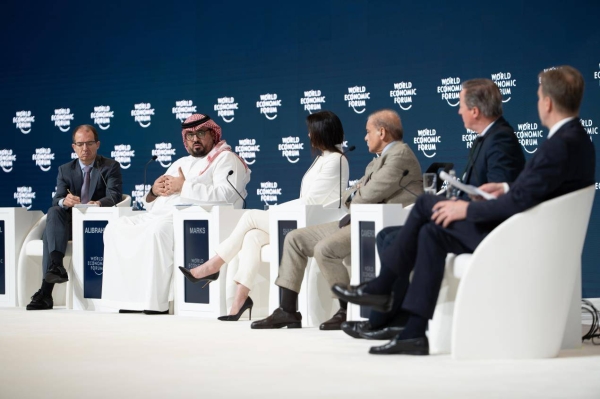
VIENNA, Austria — The reconvened 13th Organization of the Petroleum Exporting Countries (OPEC) 13th OPEC and non-OPEC Ministerial Meeting held via videoconference, concluded on Tuesday with the continued commitment of the participating countries in the Declaration of Cooperation (DoC) to a stable market in the mutual interest of producing nations; the efficient, economic and secure supply to consumers; and a fair return on invested capital
OPEC+ meeting concluded with a solution upon which all members agreed. Tuesday’s meeting saw the groups agree to lift oil production by 75,000 barrels per day over January levels, according to OPEC’s post-meeting press release.
But Saudi Arabia’s late announcement after the meeting sent oil prices soaring —that Saudi Arabia would voluntarily cut an additional 1 million barrels per day in February and March above its current quota — all while OPEC’s allies get to ramp up production.
The OPEC+ meeting offered so much to digest that it would be the talk of the oil market for a while. Balances within the group are fragile as ever. Russia and Kazakhstan got away with increasing their output in February and March, while other OPEC members have to bite the bullet.
Rystad Energy’s Head of Oil Markets Bjornar Tonhaugen interpretation of Tuesday’s developments emphasizes that Saudi Arabia has put the cherry on the cake and if there is one way to describe what its voluntary cut means for the market, ‘happy hour’ is a pretty fitting term.
“They say there is no such thing as a free meal, but it’s difficult to see how a beast of a 1 million bpd cut is justified behind closed Saudi strategist doors,” said Tonhaugen, adding, “Russia and Kazakhstan got away with increasing their output in February and March, while other OPEC members have to bite the bullet.”
Today’s deal, however, even though it offers some market stability until the end of March, is not a deal that OPEC members may digest easily. Many oil producers whose fiscal budgets depend on oil output are keeping their taps tight, while sub-complying alliance member Russia is allowed to enjoy a boost, said Tonhaugen.
Why did Russia and Kazakhstan stand their ground for a quite insignificant production increase and draw out the OPEC meeting to a second day?
“As the winter turnaround and maintenance season approaches, the two countries want to avoid shutting-in any additional production for non-maintenance reasons. In Russia especially, shutting off an aging mature well can be a death sentence, as often it is uncommercial to turn back on production,” he said.
While it may anger some fellow OPEC members that also want to raise output, such as Iraq and the UAE, the market will probably speculate that slipping compliance may be on the cards, he said.
A separate and key takeaway from the Saudi stance is that the Kingdom cannot have offered to cut output without weighing demand carefully.
“The offer suggests that the Saudis are seeing demand really threatened in the short-term and want to protect prices as much as they can, especially at a time when tensions are flaring again in the region, which creates some unpredictability over price levels,” Tonhaugen said.
Refiners will also start spring maintenance in the next two months and will cut several hundred thousand barrels of processing capacity, the reason of the —previously projected surpluses in the first quarter of 2021.
The meeting also highlighted the unprecedented events of 2020 and shocking impact of the COVID-19 pandemic on the world economy and markets, and commended the DoC participating countries for undertaking the largest and longest crude oil production adjustments in history in response to the exceptional challenges and market conditions caused by the pandemic.
The meeting noted that high conformity levels have contributed significantly to market rebalancing and stability. Between May and November, participating OPEC and non-OPEC countries contributed to reducing the global supply by approximately 1.9 billion barrels, including voluntary adjustments, and this has been key to the rebalancing of the market.
The meeting decided to hold the next Joint Ministerial Monitoring Committee (JMMC) Meeting on Feb. 3, 2021, followed by a JMMC Meeting on Mar. 3, 2021 and ONOMM on Mar. 4, 2021. — Agencies











